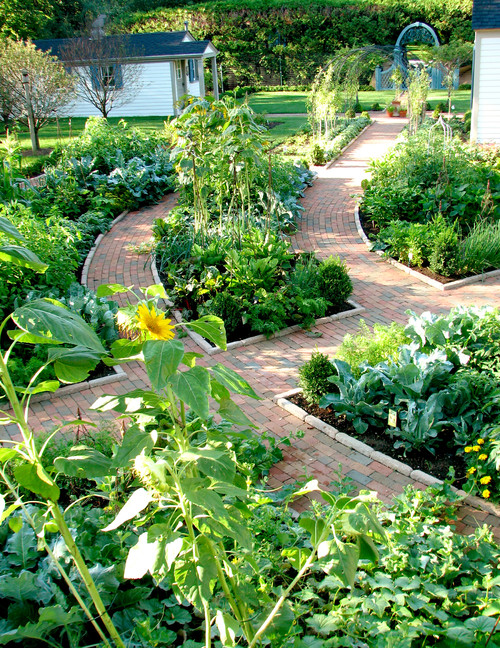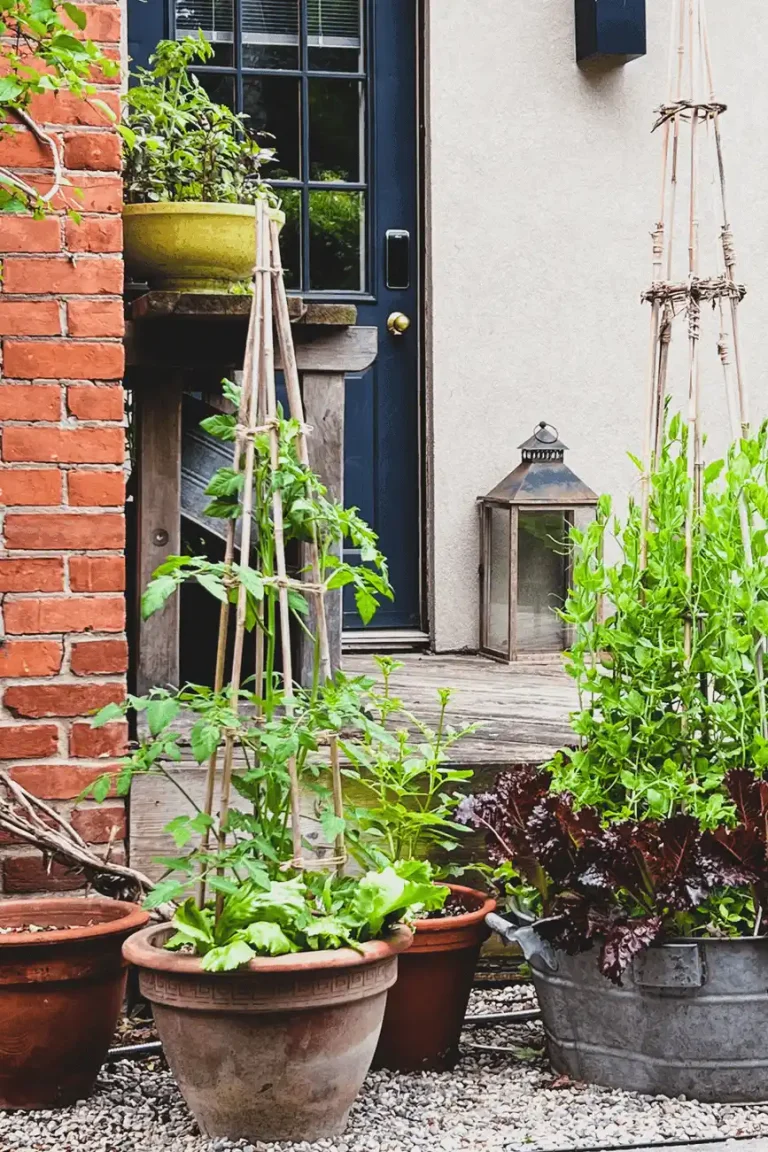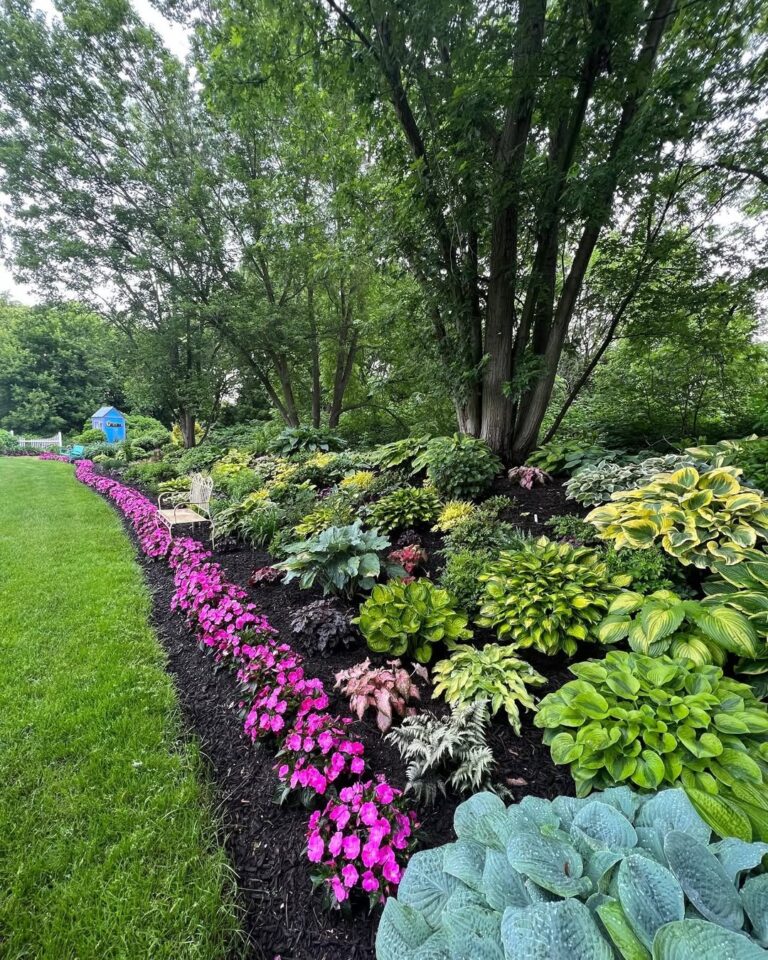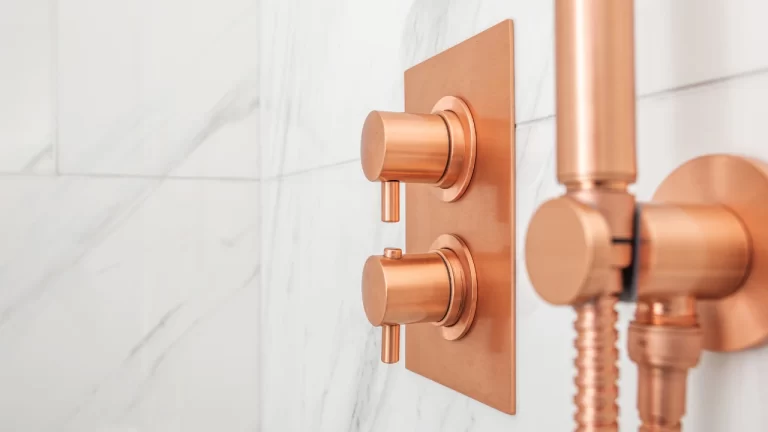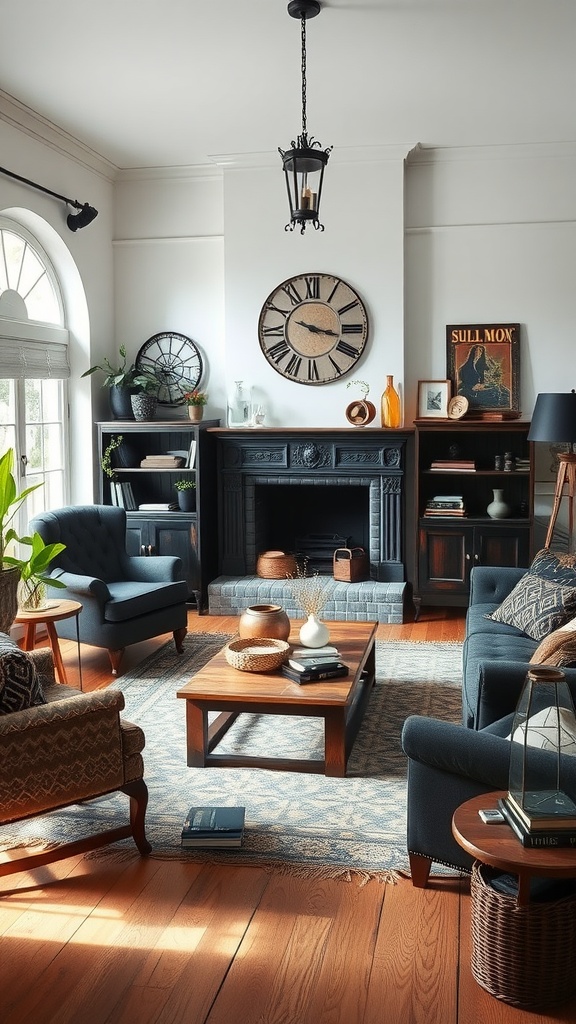15 DIY Garden Trellis Ideas
Creating a garden trellis is one of the easiest and most rewarding DIY projects for transforming your garden or backyard space. Not only do garden trellises provide a structure for climbing plants, but they can also be a stunning focal point in your outdoor living area. Whether you’re looking to add a modern touch to your patio or a rustic charm to your garden, these DIY garden trellis ideas will inspire you to get creative with your outdoor decor.
From elegant metal trellises to natural wooden designs, this guide offers a variety of trellis ideas that will suit all types of gardens and styles. Let’s dive into some beautiful ways you can incorporate a trellis into your garden!
1. Rustic Wooden Trellis Arch
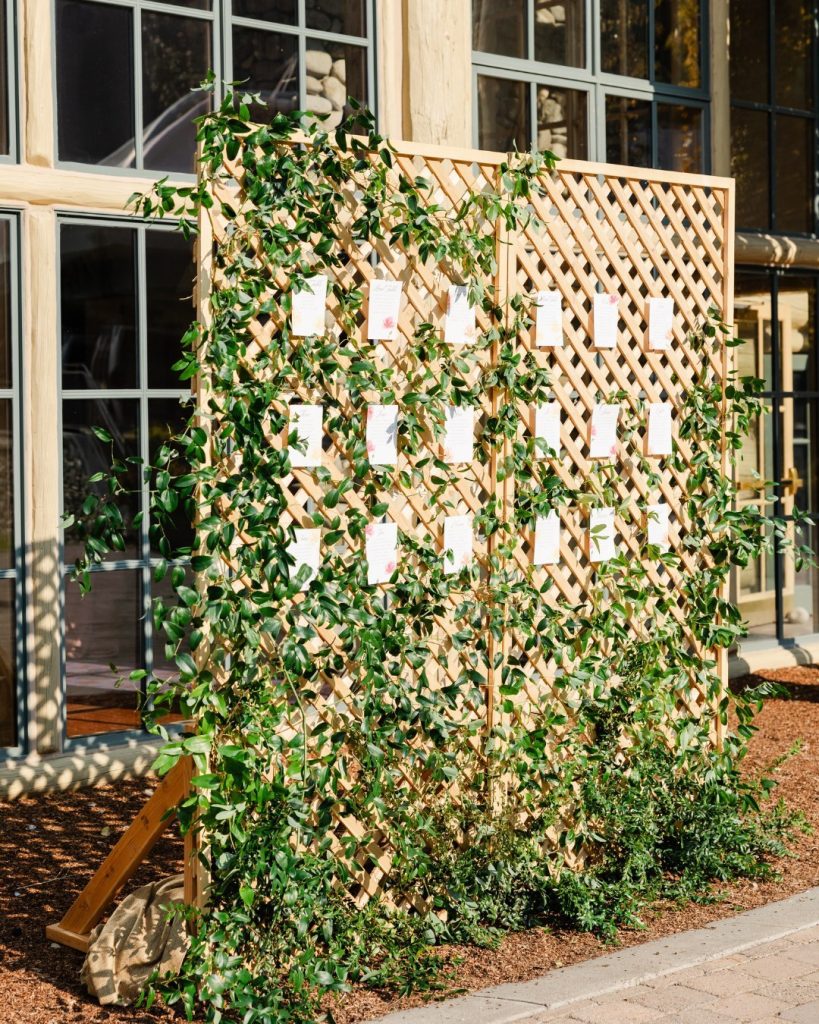
A rustic wooden trellis arch creates a charming, welcoming entrance to any garden. Made from reclaimed wood, this trellis design is perfect for those who enjoy vintage or farmhouse-style outdoor spaces. The simplicity of the wooden structure, with its natural grain and earthy tones, complements plants like roses, clematis, and ivy beautifully.
To make this DIY trellis, start by selecting sturdy wooden beams that can support the weight of climbing plants. You can either leave the wood untreated for a weathered look or stain it for a richer finish. The arch shape not only provides vertical space for climbing plants but also adds dimension to your garden entrance. This trellis idea works well for creating a private garden space or as an archway leading into your backyard retreat.
For added visual interest, consider hanging small lanterns or fairy lights along the arch. These will create a magical atmosphere in the evenings, adding to your garden’s ambiance. Whether it’s positioned at the end of a garden path or between two flower beds, this trellis arch brings a rustic elegance to any outdoor space.
2. Modern Geometric Trellis
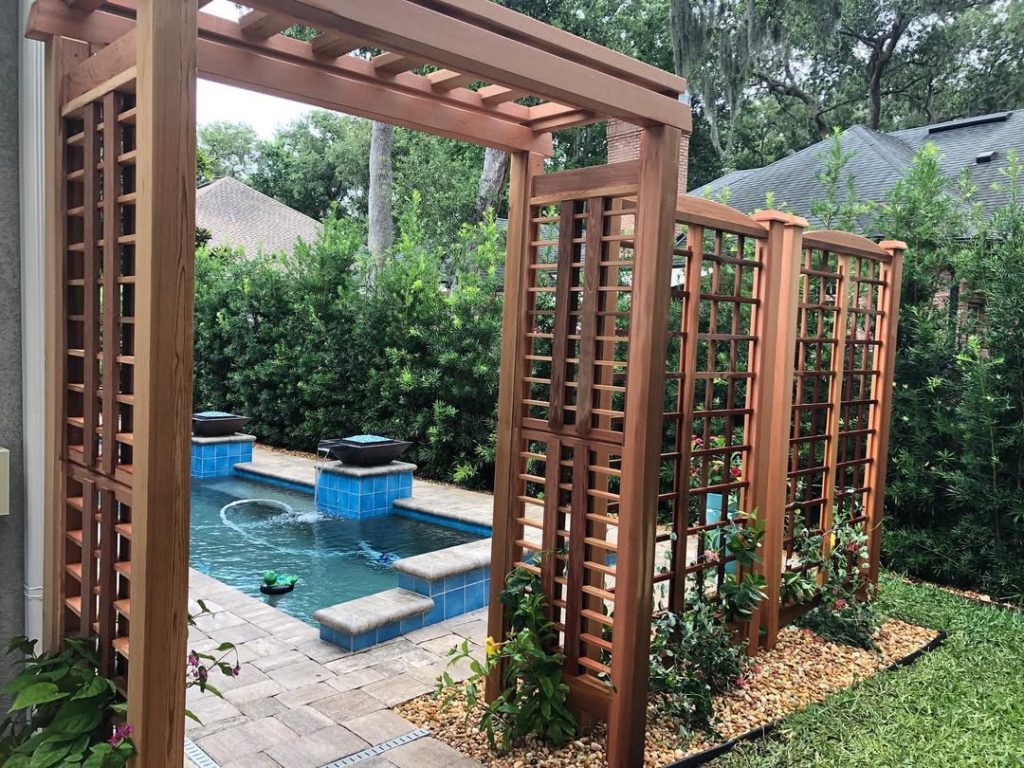
For a more contemporary look, a modern geometric trellis will be the perfect addition to your garden. This minimalist design features clean lines and angular patterns that are ideal for modern back porch ideas. The sleek, symmetrical shapes of a geometric trellis work well with climbing plants like jasmine, morning glories, and even sweet peas, which can twist and wind their way through the structured design.
To build a geometric trellis, you can use materials like metal or treated wood. Metal trellises, particularly those made from steel or wrought iron, are durable and add an industrial flair. Arrange the geometric shapes in a way that creates both visual interest and a functional space for your plants to climb. This design not only serves as a garden trellis but also as an eye-catching piece of outdoor art.
Geometric trellises are also great for those who want to maintain an open, airy feel in their backyard. Since they’re often constructed with narrow slats or thin wires, they won’t block light or take up too much space. Combine this trellis with modern patio furniture and sleek outdoor decor for a cohesive contemporary garden setup.
3. Cedar Ladder Trellis

A cedar ladder trellis is a simple, yet functional DIY project that adds both style and utility to your garden. Made from cedar wood, this design takes inspiration from the classic ladder shape but is elevated to a new level by using it as a trellis for climbing plants. The rungs of the ladder provide plenty of surface area for plants like cucumbers, tomatoes, and peas to cling to.
To create this trellis, all you need is some cedar wood planks and screws. Cut the planks into equal-sized pieces to form the ladder’s rungs, then attach them to vertical posts. You can choose to leave the wood unfinished to let it weather naturally or stain it for a darker finish. This trellis works particularly well in vegetable gardens or as part of an edible garden design.
What makes the cedar ladder trellis so versatile is that it can be used both horizontally against a wall or vertically as a standalone structure. You can also lean it against a fence or structure for added support. This trellis can be a perfect addition to your garden if you want a practical yet stylish solution for supporting your climbing plants.
4. Repurposed Window Trellis
:max_bytes(150000):strip_icc():format(webp)/Freestandingoutdoortrellis-1a688f7ea64b4454b5e20d416b87afca.png)
Why not give an old window frame a new life by turning it into a unique garden trellis? A repurposed window trellis adds a touch of vintage charm to any garden or backyard. The window’s grid can provide an intricate framework for climbing vines like ivy, honeysuckle, or wisteria, creating a beautiful and natural focal point.
To make a window trellis, first, find an old window frame at a local thrift store or flea market. You can leave the frame as-is for a rustic look, or you could paint it in a bright color to make it stand out. Attach the window frame to a sturdy post or fence to keep it upright. For additional support, add wire mesh across the back of the window frame, which will allow plants to climb and spread throughout the window’s grid.
This trellis design works especially well in cottage-style gardens or areas where you want to add a bit of nostalgic flair. You can also use it as a privacy screen, allowing vines to grow up and over the window, creating a beautiful and natural barrier.
5. Wire and Pipe Trellis
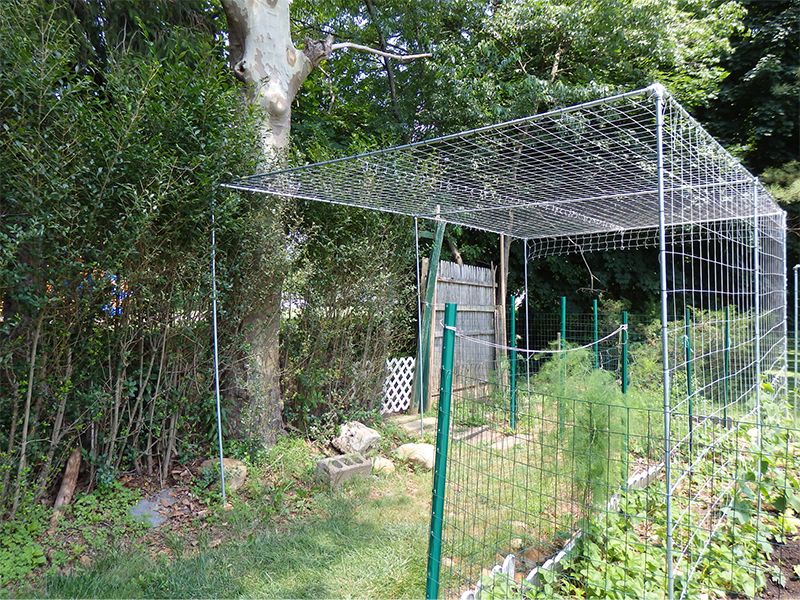
For a modern twist on the classic trellis design, consider building a wire and pipe trellis. This design incorporates industrial materials like galvanized pipes and metal wire to create a sturdy, functional trellis that is perfect for contemporary outdoor living spaces. The metal pipes form a strong base while the wire provides a flexible grid for climbing plants to attach to.
To build this trellis, start by securing the metal pipes vertically into the ground, either in the form of a single column or a series of rows. Once the pipes are in place, stretch the wire horizontally between the pipes, creating a grid pattern. The wire can be tightened to ensure it’s taut and secure, providing plenty of surface area for plants to climb.
This trellis design is not only durable but also highly customizable. You can adjust the height and width of the trellis to suit your garden’s needs. The wire and pipe trellis is ideal for modern patio furniture and contemporary back porch decor, making it a great option for those looking to add a sleek, industrial touch to their garden.
6. Freestanding Arbor Trellis
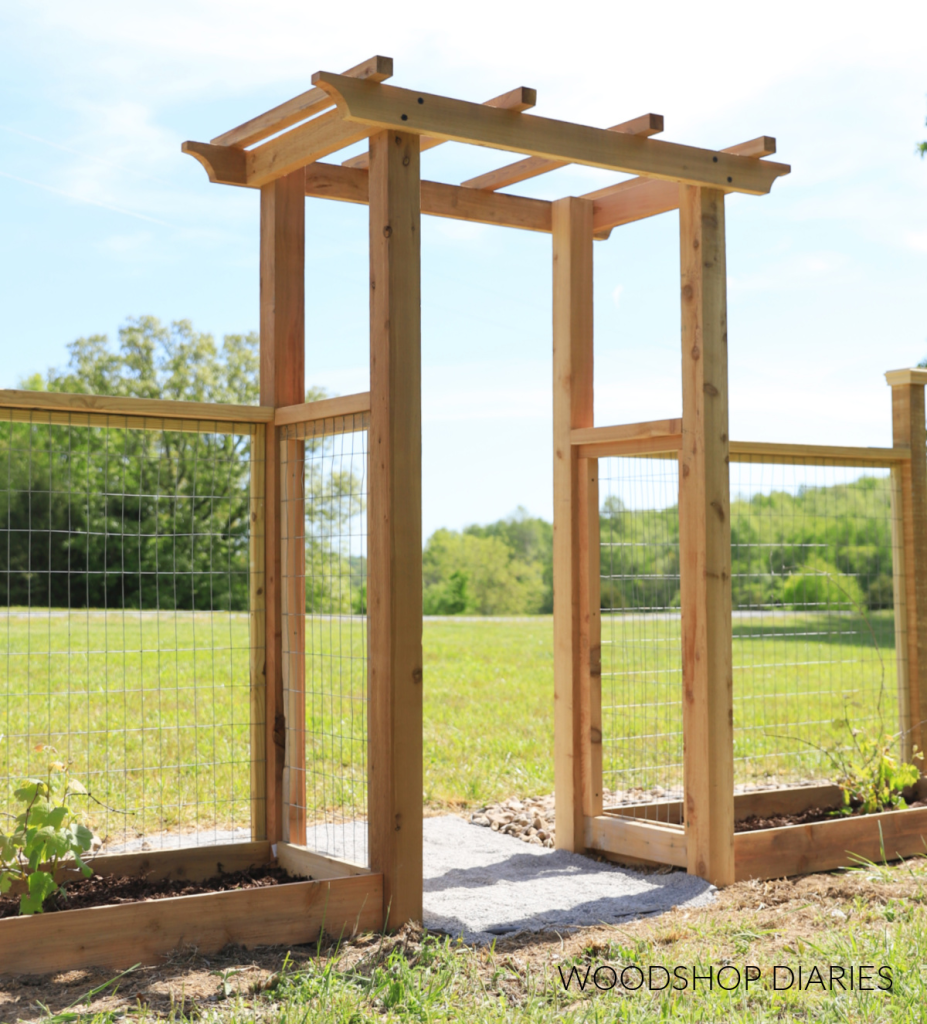
A freestanding arbor trellis is a stunning focal point for your garden, offering both beauty and functionality. Unlike traditional trellises that are attached to walls or fences, a freestanding arbor trellis stands on its own and can be placed anywhere in your garden. It creates a striking vertical element that is perfect for growing climbing plants like roses, vines, and even certain vegetables.
This type of trellis typically features a wooden or metal frame with an open, airy structure that allows plants to grow freely. The trellis can be built as a simple arch or with a more elaborate design that includes side panels for additional plant support. You can also add decorative elements like lanterns, climbing lights, or hanging planters for added charm.
A freestanding arbor trellis is perfect for creating a garden pathway or adding interest to an otherwise flat garden space. This type of trellis is especially effective in larger gardens or backyards where you have the space to allow climbing plants to grow and cascade from the structure.
7. Teardrop Trellis
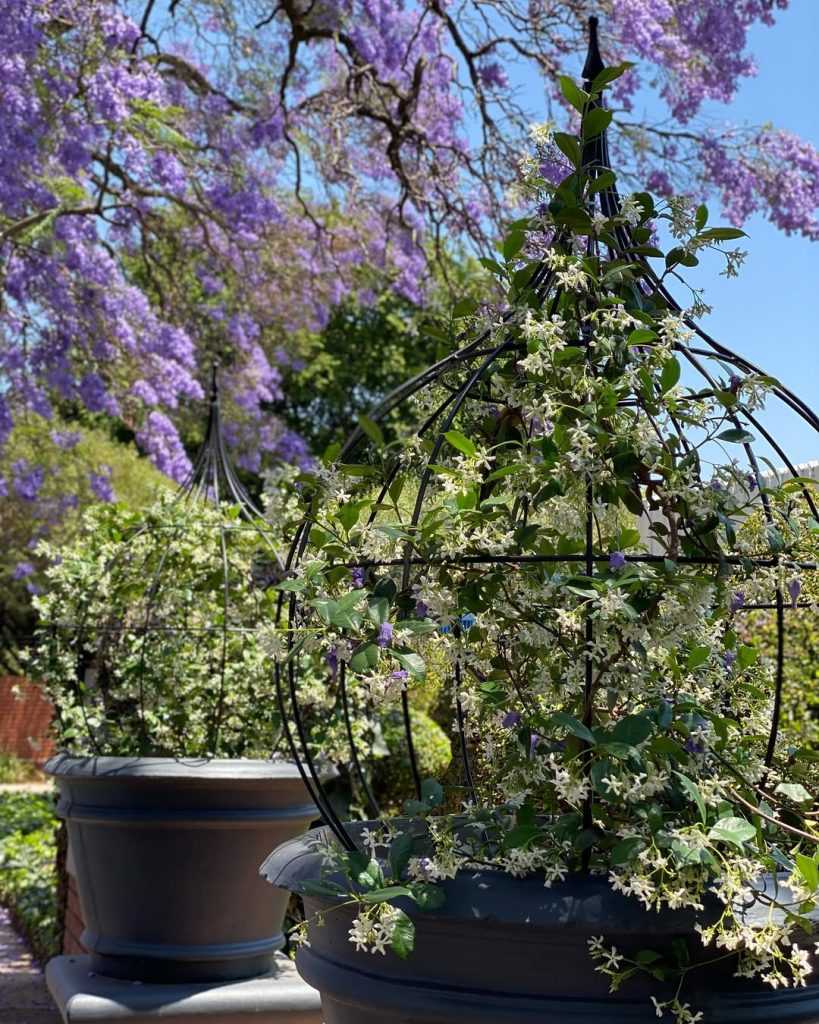
The teardrop trellis is an elegant and modern design that adds a touch of sophistication to your garden. Shaped like a tear drop, this trellis creates a beautiful arch with a graceful curve that is perfect for climbing plants like passionflower, jasmine, and climbing roses. The shape of the teardrop trellis draws the eye upward, making it an ideal focal point in any outdoor space.
To make this DIY trellis, use metal rods or wooden dowels to form the teardrop shape. You can weld or tie the rods together at the top to create the curved structure. If you prefer a more rustic look, opt for wood, or for a more modern aesthetic, go for metal or wire. Once the frame is built, you can attach wire or twine between the vertical supports to create the grid for climbing plants.
The teardrop trellis is particularly stunning when placed at the end of a garden path or as a standalone piece in your backyard. It works well in gardens with a contemporary or minimalist design, adding a unique and refined touch to your outdoor living space.
8. Trellis Wall for Vertical Garden

A trellis wall is a fantastic way to make use of vertical space in your garden, especially in small backyards or urban settings. By covering a wall with a trellis structure, you can create a vertical garden that allows climbing plants to thrive without taking up precious floor space. This trellis design is perfect for growing herbs, flowers, or even vegetables like tomatoes and cucumbers.
To create a trellis wall, attach wooden slats or metal wire to a fence or wall. Ensure the materials are sturdy enough to support the weight of climbing plants. For added functionality, you can install small shelves or containers along the bottom to hold additional plants or gardening tools. A trellis wall not only serves as a beautiful backdrop for your plants but also as a practical solution for maximizing growing space.
This type of trellis is perfect for modern back porch ideas, adding greenery to otherwise unused vertical space. It works well in tight urban gardens, balconies, or small patios where you want to create a lush garden without sacrificing floor space.
9. Hanging String Trellis
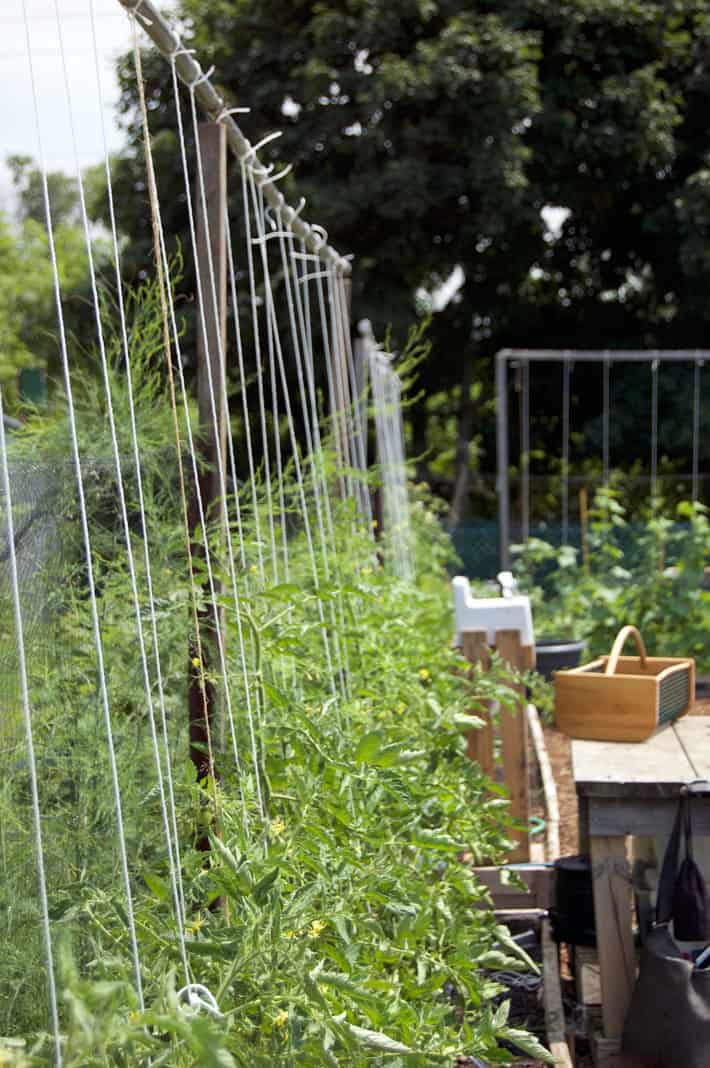
A hanging string trellis is a simple and modern way to add vertical interest to your garden. This trellis design utilizes durable string or twine to create a grid-like pattern for climbing plants to latch onto. The beauty of this trellis lies in its minimalist design and the ease with which it can be constructed. Whether you’re looking for a quick DIY project or a budget-friendly option, a hanging string trellis is the perfect solution.
To make this DIY trellis, you’ll need a sturdy support structure such as a wooden beam, fence, or even a tree. Simply attach lengths of string or twine to the support at even intervals, then tie them tightly so they hang vertically. The string should be taut enough to hold climbing plants like peas, beans, or sweet peas, while also being flexible enough for the plants to weave through as they grow.
This trellis is especially great for small gardens or urban spaces, where space is limited, but you still want to add climbing plants. It can be positioned along walls, fences, or used as a temporary structure that can be taken down and repositioned as needed.
10. Cinder Block Trellis
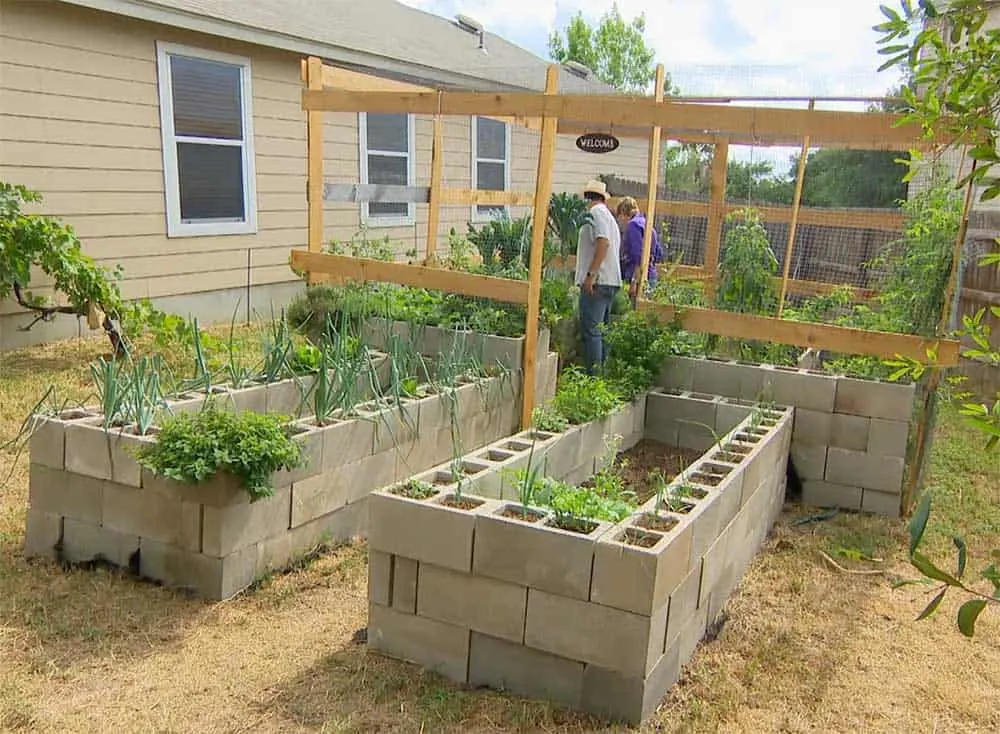
For a more industrial or urban garden look, a cinder block trellis can provide both support and structure for climbing plants. Cinder blocks, which are easily accessible and inexpensive, can be stacked to create a sturdy framework for your trellis. This design works particularly well with plants that need a little more support, such as cucumbers, tomatoes, or climbing beans.
To build a cinder block trellis, begin by stacking the blocks vertically or in a long, horizontal row, depending on the size and layout of your garden. You can create multiple rows for a larger structure or just use a single column to create a simple trellis. Once the blocks are stacked, stretch metal wire or garden netting across the top to create the surface that your plants will climb. For a more finished look, you can paint the cinder blocks in a color that complements your garden decor.
The cinder block trellis is a highly durable option that is both practical and eye-catching. It’s especially ideal for vegetable gardens and raised beds, where the need for a sturdy climbing surface is essential. This trellis is also low-maintenance and will withstand the elements, making it a long-lasting addition to your garden.
11. Bamboo Trellis
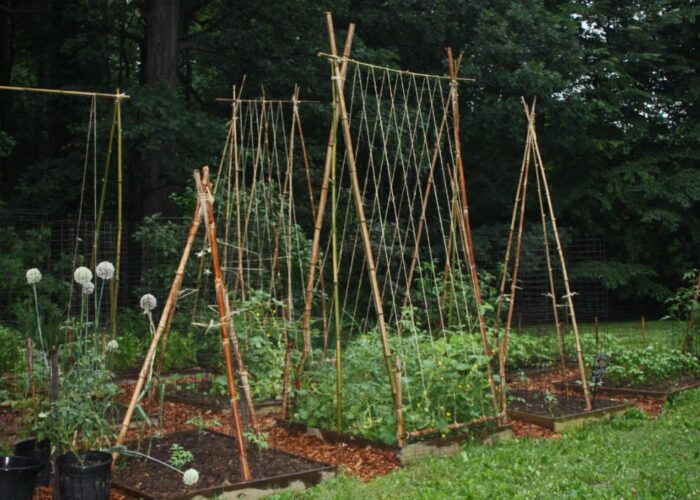
If you’re looking for a natural, eco-friendly option for your garden, a bamboo trellis is an excellent choice. Bamboo is lightweight, flexible, and strong, making it an ideal material for creating an organic trellis structure. Bamboo trellises work particularly well in tropical, cottage-style, or Zen-inspired gardens where you want to bring in a bit of nature’s simplicity.
To create a bamboo trellis, gather several bamboo poles of varying lengths and lay them side by side to form the framework. You can use a horizontal design, where the bamboo poles are secured between two vertical supports, or a vertical design where the poles are tied together in a triangular shape. Bamboo can also be used as a material for the cross supports, creating a crisscross pattern for plants to grow on.
Bamboo trellises are ideal for growing plants like peas, beans, or flowering vines, and they provide an excellent backdrop for blooming climbers like morning glories or jasmine. The natural look of bamboo blends seamlessly with most garden styles and can be incorporated into both rustic and modern outdoor spaces.
12. DIY Pallet Trellis
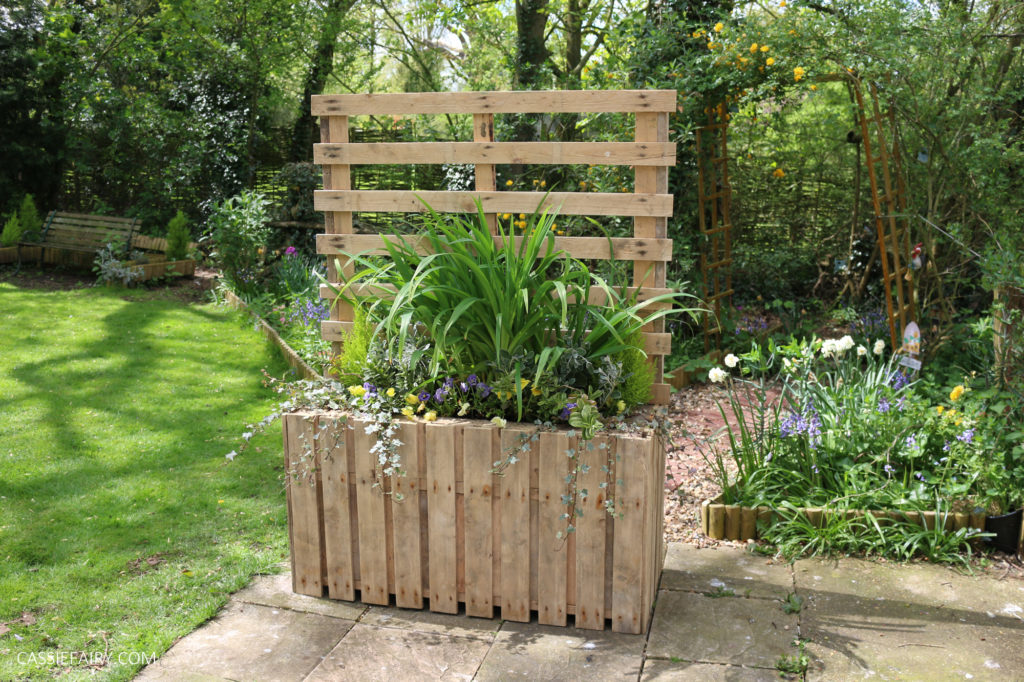
A DIY pallet trellis is an easy and cost-effective way to create a vertical garden feature using materials that are often readily available. Pallets can be found at many local stores or marketplaces, and they can be repurposed into a charming, rustic trellis that supports climbing plants like cucumbers, tomatoes, and flowering vines.
To build a pallet trellis, you’ll need to find a sturdy pallet and a few basic tools. Begin by standing the pallet upright in your garden, securing it with stakes or strong ties to prevent it from falling over. You can reinforce the pallet by attaching additional slats or crossbars to ensure it’s stable enough to support climbing plants. Once it’s in place, simply train your plants to grow up and through the gaps in the pallet.
This trellis idea works well in gardens with a rustic or reclaimed style, and it’s a great way to incorporate upcycled materials into your outdoor decor. Additionally, pallet trellises are easy to modify, allowing you to adjust the height or width based on your specific garden needs.
13. Triangular A-Frame Trellis

A triangular A-frame trellis is a sturdy and visually appealing structure that is perfect for supporting climbing plants in your garden. The A-frame design creates a symmetrical, triangular shape that is ideal for growing plants that need extra support, such as peas, beans, and tomatoes.
To make this trellis, you’ll need four wooden posts or beams that are cut to equal lengths. Connect the posts at the top to form a triangular shape, then secure horizontal crossbars along the frame to create the grid for plants to climb. The beauty of the A-frame design is that it provides support from both sides, making it highly effective for plants that grow in a vine-like fashion.
This type of trellis is especially great for vegetable gardens or raised beds, as it provides ample space for climbing plants to spread out. You can also paint or stain the wooden frame to match your garden’s aesthetic, whether you prefer a rustic or modern look.
14. Living Trellis
:strip_icc():format(webp)/bhg-trellis-art-8648558-d4f3df4b04b54ad8a0e8bf90e5dd3406.jpg)
A living trellis is a creative and eco-friendly option that involves growing plants into a trellis-like structure. This method uses vines or climbing plants to naturally form the trellis framework itself. Popular plants for a living trellis include ivy, honeysuckle, or even wisteria. Over time, the plants will grow to cover the structure, creating a lush, green backdrop for your garden.
To create a living trellis, first, install a sturdy framework made from wood, metal, or wire. Then, plant your climbing vines at the base and guide them to grow up the structure. As the vines grow, they will begin to intertwine with the framework, eventually creating a fully green, natural trellis. This type of trellis is ideal for creating shaded areas or privacy screens in your garden, and it offers the added benefit of attracting pollinators like bees and butterflies.
A living trellis can be incorporated into a variety of garden styles, including cottage gardens or contemporary landscapes. It’s a great way to combine the beauty of climbing plants with the functionality of a trellis, creating a unique and sustainable feature for your outdoor space.
15. Welded Wire Trellis

A welded wire trellis is a simple yet durable option that is perfect for supporting heavy climbing plants. The sturdy metal mesh offers plenty of surface area for vines, flowers, and vegetables to grow and climb. It’s a particularly great option for vegetable gardens, where you need a trellis that can hold up under the weight of plants like tomatoes or cucumbers.
To build a welded wire trellis, start by purchasing a roll of welded wire mesh, which can be found at most hardware stores. Cut the wire to your desired size and attach it to a support structure such as wooden posts, metal poles, or a fence. You can also create a freestanding frame for your welded wire trellis if you need a more flexible setup. This design is especially versatile, as it can be used for a wide variety of plants, from flowers to vegetables.
The welded wire trellis is an ideal choice for those looking for a low-maintenance, long-lasting solution for their climbing plants. It’s both functional and aesthetically pleasing, making it a great addition to any garden or backyard.
Conclusion
DIY garden trellises offer a great way to add vertical beauty and functionality to your outdoor space. From rustic wooden arches to modern geometric designs, there is a trellis style to suit every garden and aesthetic. Whether you’re growing flowers, vegetables, or simply adding greenery to your backyard, a trellis is the perfect way to elevate your outdoor decor.
The 15 ideas presented in this article give you a range of styles to choose from, all of which can be customized to fit your garden’s unique needs. With a little creativity and some basic materials, you can create a trellis that will not only support your climbing plants but also become a stunning focal point in your garden.
Now that you have some inspiration, it’s time to roll up your sleeves and get started on your own DIY garden trellis project. Happy gardening!

